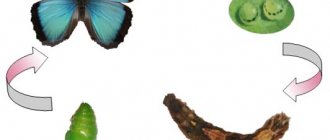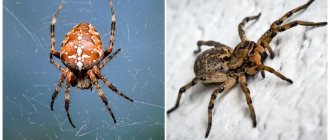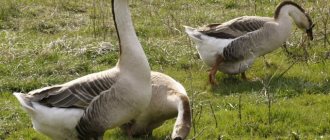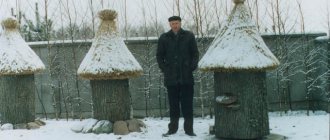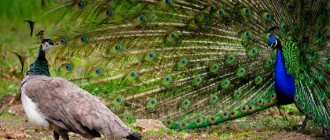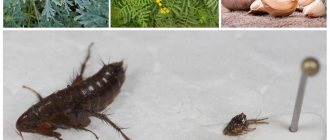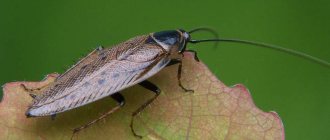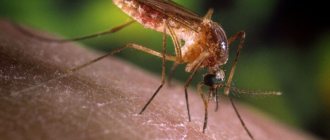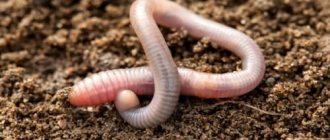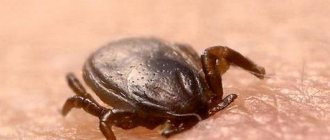Beekeeping in Bashkiria is one of the significant sectors of the national economy. Bashkiria can rightfully be called the capital of beekeeping and honey production. Statistics show that at the moment this republic is the leader among all Russian regions in nectar production. Since 1998, the number of bee families has been declining throughout the country, and in Bashkiria an annual five percent increase was recorded. Such a favorable development of the beekeeping industry was ensured by the experience accumulated over centuries, and the fact that it was literally passed on from generation to generation, that is, interest in this industry has not been lost over the years.
Beekeeping in Bashkiria is one of the significant sectors of the national economy
How is beekeeping developing in Bashkiria?
Beekeeping in Bashkiria is recognized as one of the most successful and dynamically developing agricultural industries. In local apiaries, experts identify an amazing number of bee families - over 250 thousand. Initially, by analogy with other Russian regions, in the republic the greatest attention was paid to harvesting on-board honey, but soon the log and frame methods also received active development. The experience of Bashkir beekeepers is undeniable and extremely great, in addition, it increases every year.
As a rule, the apiaries of the republic are the property of individual entrepreneurs, but there are also both state and scientific bee farms in significant quantities. For example, in Bashkiria, a research center for beekeeping and apitherapy, founded back in 1998, is actively functioning. The company even has the right to use its own brand – “Bashkir Honey”.
In addition to research, the center also produces cosmetic and therapeutic products, for example:
- bubble bath;
- shower gels;
- detergents;
- medicines based on beekeeping products;
- cream for face, body, etc.
In addition to the listed products, the center provides more common things, such as honey in many variations or royal jelly. But the main goal of the research center is to promote the development of bees: breeding breeds, preserving their habitat, studying the living conditions and development of animals.
Beekeeping in Bashkiria
Beekeeping is the oldest craft of the indigenous population of Bashkiria. Initially, probably like everywhere else, honey and wax were obtained simply by destroying the found bee nests, then they started beekeeping on board (somewhere in the 15th century), then log beekeeping came, and then frame beekeeping, which is still developing today.
In terms of industry development, beekeeping in Bashkiria occupies one of the leading places among the constituent entities of the Russian Federation and is among the top 7 constituent entities in terms of the number of bee families and the production of marketable honey, so in Bashkiria in 2012 there were more than 309,000 bee families (in 2005 there were 278.1 thousand bee families). In Russia, the number of bee colonies decreases every year, but in Bashkortostan, since 1998, an annual increase of 4-10% has been observed. Although, data on the number of bee families varies: for example, according to the results of the 2006 All-Russian Agricultural Census, there are 315,800 bee families in the republic.
The largest number of bee families (400 thousand) in the republic was in the 1960s. Currently, there is a tendency to reduce the number of bee families and honey production in public apiaries, but in amateur apiaries the number of bee families and the volume of honey production are increasing.
The republic has the necessary conditions for the development of beekeeping:
- rich natural and cultivated honey-bearing vegetation;
- a unique Bashkir population of honey bees (the so-called Burzyan bee, popularly known as Burzyanka);
- centuries-old traditions and high skill of beekeepers;
- educational institutions for training beekeepers;
- enterprises for the production of bee equipment and foundation;
- demand for Bashkir honey and bees of the Bashkir breed in the Russian and world markets;
- legislative basis for the development of the beekeeping industry.
What is this legislative framework? So back in 1995 (in the first of the constituent entities of the Russian Federation) the Law of the Republic of Bashkortostan “On beekeeping” was adopted. In 2005, the concept “Development of beekeeping in the Republic of Bashkortostan until 2010” and the republican target program “Development of beekeeping in the Republic of Belarus” for 2006-2010 were developed and adopted. In December 2012, the “Concept for the development of beekeeping in the Republic of Belarus until 2022” was adopted, thanks to which it is planned to increase the number of bee colonies to 480,000.
At the same time, there are factors hindering the effective development of the industry:
- insufficient number of breeding apiaries for breeding the Bashkir population of honey bees, as well as the unsatisfactory state of the material and technical base of existing breeding apiaries;
- placement of apiaries without taking into account the characteristics and ecological state of the republic’s natural zones;
- felling of forests without taking into account the interests of the beekeeping industry, insufficient production and sale of honey plant seeds to farms and the population;
- lack of an effective system for recording the number of bee colonies and the volume of beekeeping production in the private sector;
- ineffective use of highly qualified personnel and low qualifications of beekeepers + imperfect wage system in the beekeeping industry;
- insufficient number of beekeeping stores in some regions and cities of the republic + high prices for inventory and equipment;
- uncontrolled import of queen bees, families and packages of bees from the southern regions of Russia and neighboring countries, leading to crossbreeding of the Bashkir breed of honey bees.
Pollution of the natural environment with industrial waste and the use of insecticides in agriculture have a detrimental effect on the development of beekeeping. Industrial chemical waste, getting into nectar and pollen pollen, poses a danger not only to bees, but also to humans who consume bee products.
Bashkir apiaries
The products of apiaries in the Republic of Bashkortostan, from honey to medicines based on it, are recognized as the highest quality, both in the opinion of specialists who analyze and compare components, and the population of the Russian Federation as a whole.
There are a number of factors that determine the impeccable quality of honey from Bashkiria, along with the colossal experience of beekeepers:
- an impressive number of different honey plants;
- worker bees;
- provision by the republic of an educational base at a high level: any resident of Bashkiria can receive a beekeeping education up to the appropriate specialization in a higher educational institution;
- a lot of enterprises in the Republic of Bashkortostan engaged in the production of beekeeping equipment at affordable prices and good quality with further distribution among beekeepers;
- confident and favorable legislation promoting the development of the industry (the Law “On Beekeeping”, consisting of 5 chapters and 26 articles, carefully protecting the interests of beekeepers).
But despite human achievements, the main advantage is still given to the natural component, namely the presence of rich vegetation (in particular, linden forests), which became the first step to the development of beekeeping in the republic. Sunflower and buckwheat grow in abundance in the fields, and the endless steppes are full of flowers such as:
- sweet clover;
- clover;
- rape;
- mustard;
- alfalfa;
- various legumes.
Natural conditions of Bashkiria
The Republic of Bashkortostan occupies part of the eastern edge of the East European Plain. The western part of this subject of the Russian Federation is flat, the eastern part is mountainous. The specificity of the region is that the main part of its territory is covered with forests, in which there are significant areas of honey plants. No other region of the Russian Federation has forests of such scale and quality. This, together with the special climatic conditions and rich flora, make Bashkortostan one of the most favorable regions for the development of beekeeping.
beekeeping
Beekeeping began the development of beekeeping not only in Bashkortostan, but throughout the world. The method involves keeping bees in hollow trees and the honey produced by the bees is eventually extracted by beekeepers. In the republic to this day, despite the progress and achievements in the beekeeping industry, a region has been preserved where honey is obtained in this ancient way. The word “beekeeping” comes from the word “bort” - a hive in the form of a hollowed out log or hollow.
The Shulgan-Tash nature reserve, created at one time with the aim of preserving and demonstrating to people this oldest form of honey fishing, enjoys considerable fame.
The optimal combination of linden forests and tall pine is an ideal place for the development of the on-board honey industry. The Burzyansky district is the best representative of the regions where beekeeping flourishes to this day, and local honey receives praise not only within the Russian Federation, but even beyond its borders.
The traditions of beekeeping are usually passed down from generation to generation. This is due to the fact that one side can function for 150 years.
Story
Boring on a tree in the Shulgan-Tash nature reserve
Beekeeping in Bashkortostan is the oldest type of craft; evidence of this is the findings of the Birsky burial ground, which is about one and a half thousand years old: among the utensils there, complete beekeeping equipment was found.
Beekeeping in Bashkortostan developed in several directions: wild, beekeeping, distillation, log, frame.
The beads (soloҡ) were hollowed out in trees (oak, linden, larch, pine, less often elm) at a height of 4-12 m. The beads served for up to 150 years. Many families had more than a hundred boarders. Side trees were inherited, and the owner's tamga was placed on them. The value of the land was also due to the fact that honey was part of the tribute.
Beehives in the Chekmagushevsky district of the Republic of Bashkortostan Flowering of a valuable honey plant - linden Flowering bruise in the Ishimbay region - a very valuable honey plant, from 1 hectare bees extract 300-400 kg of honey
On-board fishing with a swarming system in which bees were smoked with sulfur dioxide (the bees suffocated and died from the thick toxic smoke) was improved. In the second half of the 18th century, Bashkir beekeepers, taking honey, already sought to preserve the bee family.
Bashkir beekeeping was first described in 1767-1769 by P. I. Rychkov in the article “On keeping bees” and in “Proceedings of the Free Economic Society”. In the descriptions of the scientist I. I. Lepekhin in the 18th century of the Bashkir people, information is given that some Bashkir families had from five hundred to a thousand borts, from which they received honey and wax. Poor Bashkirs were hired by the rich, while one person coped with two hundred boards. But most of the Bashkirs did not hire workers, but worked in the beekeeping farm with the whole family, including very old people.
At the end of the 19th century, frame beekeeping was introduced in Bashkiria and the first apiaries were organized in frame hives.
By the early 50s of the 20th century, the transfer of bee colonies from logs to frame hives was completed in the Bashkir Autonomous Soviet Socialist Republic. In remote villages of the mountain-forest zone, frame hives are common in collective farm and state farm apiaries; private bees are kept in log hives; there are bees in the forests with the Burzyan bee aboriginal bee. To train beekeepers, Lyakhovskaya (1892) and Klyucherevskaya (1910) three-year beekeeping schools were opened.
The foundations of scientific beekeeping in Bashkortostan were laid in 1930 with the creation of an experimental beekeeping station and the training of beekeepers at the Yumatovo Beekeeping College in 1932. Since 1964, the Department of Beekeeping was opened at the Bashkir Agricultural Institute.
Scientists - beekeepers R. R. Aznabaev, G. S. Borovik (Iglinsky district), S. N. Kilinbaev, R. M. Latypov (Kugarchinsky district), I. K. Onishchenko (Sterlitamak district) in favorable years, they received 70-100 kg of honey from each bee colony.
In the 60s of the 20th century in the BASSR there were 200-220 thousand bee families on collective and state farms. Honey production in the Republic of Belarus from public apiaries amounted to 1.5-2.0 thousand tons.
The main honey plants of Bashkiria
Bashkiria is the homeland of many honey plants, the flowering periods of which fall at different times of the year: spring, summer and early autumn. Let's look at the most valuable and widespread among them.
Spring honey plants
About 40 species of spring honey plants grow on the territory of the Republic of Bashkortostan:
- willow - goat willow, blackening, white, ashy, etc.;
- honeysuckle – fluffy and Tatar;
- currants – red and black;
- as well as other plants, such as Norway maple, blood-red hawthorn, bird cherry, mountain ash, etc.
Summer honey plants
Bashkiria is rich in summer honey plants - in the summer over a hundred species of plants from herbaceous to trees bloom on the territory of the republic:
- clover – white, pink and creeping;
- Siberian hogweed;
- small-leaved linden;
- mouse peas.
And many other plants. Summer honey plants are the basis for the future production of honey on an industrial scale, and beekeepers consider the main one to be the linden tree, which grows in huge quantities on the territory of Bashkiria.
Autumn honey plants
The republic has about 30 species of late-summer and autumn honey plants:
- ordinary bruise;
- blooming Sally;
- white sweet clover;
- sage whorled;
- yellow alfalfa;
- common chicory, etc.
Bashkiria is provided with flowering plants for three out of four seasons, which allows local bees to produce honey almost all year round.
Honey plants of Bashkortostan
A third of all linden forests in Russia are located in Bashkortostan. In the mountain forest areas, significant thickets of Norway maple and willow have been preserved. The diversity of wild honey plants is complemented by large areas of cultivated nectar plants. In Bashkiria there are over 50 spring honey plants, more than 100 species of summer honey plants and about 30 species of late summer and autumn. According to other data, there are about 300 species of honey plants in the republic.
In the forest-steppe and steppe zones, large areas of agricultural crops of melliferous importance are cultivated: buckwheat and oil sunflower; legumes, perennial grasses: red clover, alfalfa, sainfoin, sweet clover (yellow and white), oriental goat's rue (galega), as well as mustard and spring rape crops. In many regions of the republic, various melliferous plants of hay and pasture lands have a certain importance.
Potential honey reserves in the republic are about 525,500 tons, of which honey bees can use 173,400 tons, which makes it possible to productively support 1,347,000 bee families, which is four and a half times more than currently.
Problems of local beekeeping
However, despite the fact that Bashkiria is the titan of beekeeping in the Russian Federation, it is also not without problems and difficulties. These problems are especially noticeable for novice beekeepers:
- Monopolization. A decent part of the market, as well as positive attention from the authorities of the republic, is occupied by the above-mentioned Bashkir Research Center for Beekeeping and Apitherapy. This is fraught with the fact that legislation is primarily on the side of the center, and not of individual entrepreneurs. In addition, it is often too difficult for novice beekeepers to compete with such a giant.
- Technological backwardness. Despite the fact that beekeeping is very well developed in Bashkiria, quite a lot of time still passes before the latest technologies reach the republic.
- Deforestation. This problem is relevant for many industries, especially agricultural ones, but for honey production it plays a special role. The difficulty is obvious: the fewer honey-bearing trees, the less honey will be produced in the end.
- Treatment of vegetation with insecticidal agents. Leads to mass death of bees. In addition, traces of these chemicals are later found in honey.
- A short list of breeding apiaries engaged in breeding the Bashkir population of honey bees.
- High prices for breeding material.
- Lack of control over the import of bee families and queens into the Republic of Bashkortostan from other regions and from abroad. Leads to the crossing of species, and, as a result, there is a loss of qualities of the Bashkir breeds of honey bees.
Current state
Honey production in the Republic of Bashkortostan
Based on the results of research conducted at the State Budgetary Institution BNIC (State Budgetary Institution Bashkir Research Center for Beekeeping and Apitherapy), the parameters of the main economically useful traits and biological characteristics of Bashkir bees were identified:
- the body weight of bees when leaving the cells is 110-115 mg, of barren queens - 190-195 mg, of fertile queens - 210-215 mg, of drones - 235-255 mg;
- The body color of bees, queens and drones is dark gray, without yellow elements on the tergites; honey signet - white (“dry”);
- winter-spring mortality of bee colonies - no more than 3-5% of the number available on the day of the autumn audit;
- food consumption per street of overwintered bees is on average about 1.0-1.2 kg of honey;
- The egg production of queens during the period of intensive spring-summer development of bee colonies is 2 thousand eggs per day.
To date, the number of apiaries and the volume of honey produced in the republic is decreasing, which is due to the environmental situation in the republic.
Beekeepers of Bashkortostan participate in exhibitions and beekeeping competitions for beekeepers of the republic.
On July 2, 1997, a law on beekeeping was adopted in Bashkortostan. The law describes issues of participation of the state and citizens in the development of beekeeping, taxation, state control and protection of bees, issues of placing apiaries, and recording the number of bee colonies.
A beekeeping agency has been created in the republic; inter-district branches of the Agency with subordinate regional trade and procurement centers; District beekeeping inspectors work in charge of trading and procurement points. A single Beekeeper's Day of the Republic of Bashkortostan has been established - the second Sunday of August.
The Bashkir population of bees is distinguished by winter hardiness, resistance to European foulbrood, nosematosis and honeydew toxicosis, as well as high honey productivity with a short honey collection (for example, from linden). Bashkir bees have a dry seal of honey that is highly valued by beekeepers.
The southern steppe Bashkir regions of the Trans-Urals are characterized by the lowest number of bees. The northern, central and southern regions of the Urals are most saturated with bees. The total number of bee families in Bashkortostan in 2001 was about 255 thousand (an average of 11 years - 233 thousand), and the average honey productivity per bee family was 16 kg.
Currently, work is underway in the republic to revive the on-board fishery. So in 2004, there were about 200 bee colonies in the Shulgan-Tash nature reserve (in 1927-908 families).
The value and characteristics of Bashkir honey
Diastase number is a parameter by which the value of honey is determined. It represents the ratio of the number of enzymes per unit volume. In other words, the higher the enzyme content in honey, the more valuable it is. On average, in honey produced in Russia, this figure is 4-10. Altai honey, a relatively popular and sought-after honey, has an index of 16-20. But the diastase number of Bashkir honey is 20-50, which makes it the leader in usefulness.
The Republic of Bashkortostan produces a lot of varieties of honey, and each is valuable in its own way. However, any of them contains a lot of useful substances:
- amino acids, enzymes and proteins;
- vitamins A, B, E, K and PP;
- potassium, iron, sulfur, sodium, phosphorus, calcium;
- cholines, tannins and essential oils;
- folic acid.
The most useful products of Bashkir beekeeping are the following types of honey:
- Lime. Linden Bashkir honey contains a huge amount of vitamins and microelements, and is the leader in their concentration per unit volume of honey.
- Floral. It is quite slightly inferior to linden honey in terms of the quantitative content of enzymes: flower honey contains less. However, the chemical composition of flower honey is more diverse than linden honey.
- Buckwheat. Known for its high iron and protein content. Valued for its ability to increase hemoglobin, as well as for its beneficial effect on the nervous system.
- Mountain. An indispensable assistant for sore throat, laryngitis, and acute respiratory infections. It also has a very beneficial effect on the nervous and vascular system.
Regardless of the variety, the quality and benefits of Bashkir honey are generally recognized. They are so confident in it that honey from the republic is included in the diet of Russian cosmonauts: it is included in the daily diet of workers at orbital stations.
Useful tips for beginning Bashkir beekeepers
Before starting beekeeping, you should pay attention to two factors that are of great importance for a beginner in this industry:
- Multi-body hives are the most effective to use in Bashkiria. Their design makes it possible to keep a large number of bees in a small area, which is important for novice beekeepers who do not have large finances in the initial stages.
- A large number of bee colonies is not a guarantee of a large amount of honey, and often it is even detrimental: in case of an error, it will be difficult to start again, and it will be completely impossible to return the money already spent. Therefore, it is better to start with a small but stable and well-functioning production with gradual expansion.
You should also be prepared in advance for natural risks and have an action plan in case any of the situations arise:
- Infections and parasites. If there is no response, bee families will begin to rapidly decline, up to the complete destruction of the population.
- Hypothermia of the nest. It is fraught with a reduction in the birth rate of bees, since the larvae can simply freeze.
- Starvation. It occurs due to a lack of honey or bee bread, which leads to the weakening or even death of bee colonies.
- Toxins. They cause diseases in bee colonies, including mass death.
It is recommended to start with the gray Caucasian bee and with the Carpathian bee, if we are talking about the southern regions. These bee breeds are relatively unpretentious and produce a good honey harvest.
You should also not make large investments in inventory and equipment from the very beginning. Initially, it is rare for any beekeeper to have a huge apiary, which is in vital need of tools, mechanisms and hired workers. Most of the work can be done by hand with relative ease without any additional financial costs.
When choosing a location for an apiary, it is better to give preference to places abundantly planted with flowering plants. Having a field or orchard nearby is an undeniable natural advantage.
About Bashkir beekeeping from the author
Everything written above is a retelling of Bashkir beekeeping from official sources (books, newspapers, official documents). What is it really? What kind of beekeeping is Bashkiria like?
What kind of hives do beekeepers in Bashkiria use? These are wooden beds, two-body Dadans (sometimes with 1-3 magazines or with a third body), multi-body Ruta hives (with 5 and 6 bodies), polystyrene foam Bee-Box hives (of various configurations), single-body Dadans with a frame magazine Ruta. Some people invent their own beehive systems, some master cassette pavilions, others use polyurethane foam hives.
How many bee colonies do beekeepers in Bashkiria have? This is where the real discrepancy is: from one to several hundred. Some people keep a couple of hives to provide their family with honey, others keep 20-30 families at their parents’ dacha or in the village and receive additional income from the sale of honey. There are also professionals - those with apiaries of 100, 200, 300 or more bee colonies, who receive their main income from bees.
Import of bees of southern breeds. That's what it is, that is. Indeed, bee packages and queens of southern breeds - Carpathians - are imported uncontrollably into Bashkiria (both from the Mukachevo region of Ukraine and the Stavropol Territory, and from Uzbekistan). The press (“Who will stop the flying invaders?” - Origins, June 9, 2010) also writes about the importation of bees of the gray mountain Caucasian breed. Moreover, this problem began about 15-20 years ago - they go for bee packages for resale themselves, they are brought almost by trucks... There is nothing surprising: the prices for such packages are low, there is a demand, so they carry them. To solve the problem, breeding apiaries and affordable prices are needed, but this cannot be done without government help: who will invest money to preserve “some kind of bee”? I'm afraid that by the time they take up this matter it will be too late.
